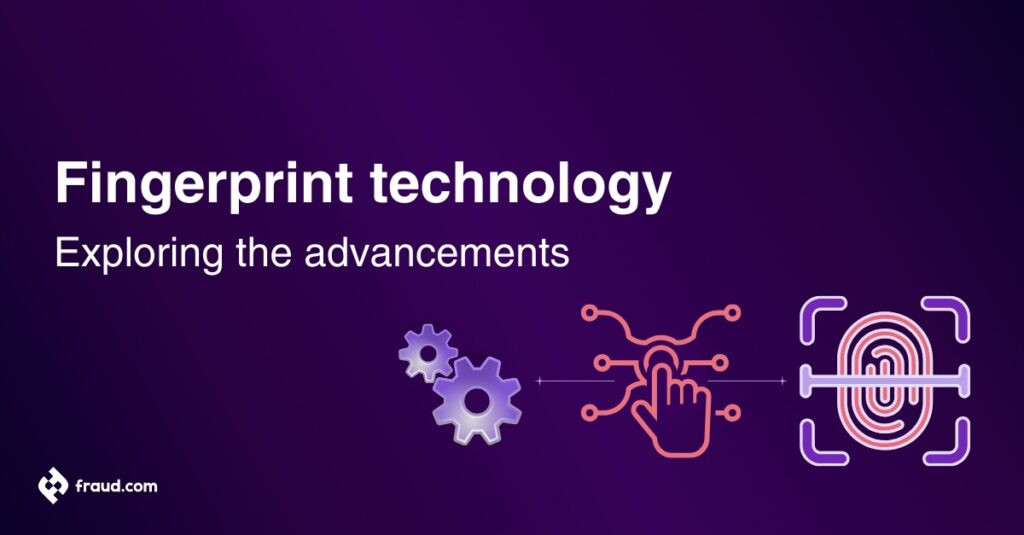In the domain of biometric authentication, electronic fingerprint recognition stands out as a robust and reliable method. This is significant as it can recognize individuals based on the distinctive designs on their fingerprints. Unlike regular passwords or PINs, fingerprints are very unique and hard to copy, making them a strong choice for security.
Biometric authentication, specifically digital fingerprint identification, has become a fundamental element in contemporary security mechanisms. This article will explore the complexities of fingerprint technology, shedding light on its development, uses, security issues, and upcoming trends.
Table of Contents
ToggleWhat is fingerprint technology?
Fingerprint technology is a sophisticated biometric authentication method that relies on the unique physiological characteristics present in an individual’s fingerprints, mainly used for biometric fingerprint authentication. It leverages the distinct ridges and valleys, as well as minutiae points, to create a detailed and exclusive fingerprint image. These patterns, including arches, loops, and whorls, form a person’s fingerprint, which is virtually impossible to replicate.
At its core, fingerprint recognition involves the analysis of ridge patterns and minutiae points. Ridge patterns are the raised lines on the fingertip, while minutiae points are specific points where ridges end, bifurcate, or intersect. This intricate anatomy allows for precise identification and differentiation between individuals.
Understanding fingerprint technology
At the heart of fingerprint technology lie ridge patterns and minutiae points, the key components that make each fingerprint unique. These distinctive features, encompassing arches, loops, and whorls, collectively form a specific fingerprint image for every individual. Fingerprint technology relies on various technologies to capture and analyze the unique patterns present in an individual’s fingerprints. This section explores the technology behind fingerprint recognition, the primary components of fingerprint technology include:
- Classification technology
The technology behind fingerprint recognition involves the sophisticated classification of these unique patterns. By analyzing the arrangement of arches, loops, and whorls, the system can accurately categorize and store the distinct fingerprint features for comparison.
- Algorithmic pattern matching
Once the fingerprint is captured, advanced algorithms are employed to analyze and extract distinctive features. Minutiae points (ridge endings, bifurcations, and other unique characteristics) are often used for pattern matching.
- Database and matching software
Fingerprint templates generated from the extracted features are stored in databases. During verification or identification, the captured fingerprint is compared with the stored templates using matching algorithms.
- Biometric templates
A biometric template is a mathematical representation of the unique features extracted from a fingerprint. The template is used for comparison and matching without storing the actual fingerprint image.
- Fingerprint scanners and sensor technologies
Fingerprint scanners play a pivotal role in capturing and interpreting fingerprint patterns. Different sensor technologies contribute to this process, ensuring accuracy and reliability in various applications.
a. Optical sensors: These sensors use light to capture a detailed image of the fingerprint’s ridges and valleys. Optical sensors are commonly found in everyday devices, providing a convenient and effective means of fingerprint recognition.
b. Capacitive sensors: Using electrical impulses, capacitive sensors detect the unique conductivity of ridges and valleys on the fingertip. Commonly employed in smartphones and other devices, capacitive sensors offer a quick and secure method of fingerprint authentication.
c. Ultrasonic sensors: Employing sound waves, ultrasonic sensors create a three-dimensional image of the fingerprint. Known for their high accuracy, these sensors are often used in advanced security systems and high-end devices.
d. Pressure-based sensors: Some fingerprint scanners use pressure-sensitive technology to measure the pressure exerted by the ridges of a fingerprint. The distribution of pressure points creates a unique fingerprint pattern.
e. Thermal sensors: Thermal sensors measure the temperature differences between the ridges and valleys of a fingerprint. The unique thermal profile forms the basis for fingerprint identification.
The integration of these sensor technologies into various applications has revolutionized security measures. From mobile devices to high-security access control systems, fingerprint technology ensures a reliable and secure method of authentication in our daily lives.
The combination of these technologies enables accurate and reliable fingerprint recognition for various applications, including access control, identity verification, and forensic analysis.
Evolution of fingerprint technology
Fingerprint technology, once exclusively reserved for forensic investigations, has undergone a remarkable evolution, transforming from its initial application into a pervasive and sophisticated tool in various technological landscapes.
Historical roots:
- Initially used in forensics to identify suspected individuals at crime scenes, fingerprint technology played a crucial role in criminal investigations.
- The emphasis was primarily on using fingerprints as a unique identifier for linking individuals to specific incidents.
Pivotal transition:
- A significant shift occurred as fingerprint technology transcended its forensic origins.
- The transition from being primarily associated with criminal investigations to widespread use in diverse technological applications marked a pivotal moment in its historical development.
Advancements in accuracy and speed:
- Continuous technological advancements have greatly enhanced the accuracy and speed of fingerprint recognition systems.
- Improved algorithms and processing capabilities contribute to more reliable and efficient identification processes.
Integration with mobile devices:
- Fingerprint technology has seamlessly integrated into everyday life through its incorporation into mobile devices.
- The commonality of fingerprint sensors in smartphones and tablets provides users with a secure and convenient method of unlocking their devices.
Enhanced user experience:
- The evolution of fingerprint technology has significantly contributed to enhancing the overall user experience in terms of security and ease of access.
- Users benefit from a quick and reliable biometric authentication method, replacing traditional passwords and PINs.
Ubiquitous applications:
- Fingerprint technology has transcended its initial use in law enforcement and forensics to find applications in various sectors.
- From securing personal devices to access control systems in high-security environments, its widespread adoption highlights its versatility.
Future prospects:
- The journey of fingerprint technology continues with ongoing research and development.
- Emerging trends, such as advancements in biometric liveness detection and multimodal biometric authentication systems, suggest a promising future for fingerprint technology.
In summary, fingerprint technology has come a long way from being used in crime investigations to becoming a common and essential part of our daily lives. This journey highlights the strength and transformative impact of this biometric authentication method.
Applications of fingerprint technology
Fingerprint technology, with its versatile and secure features, has seamlessly integrated into numerous sectors, enhancing security and streamlining various processes. Here are some key applications of fingerprint technology:
Mobile device security:
- Fingerprint technology plays a pivotal role in enhancing the security of smartphones and tablets.
- Users can conveniently and securely unlock their devices by simply placing their registered fingerprints on the sensor.
- This application ensures a quick and reliable method of access, replacing traditional PINs or passwords, and enhancing passwordless authentication.
Access control systems:
- Fingerprint technology is widely employed in access control systems to provide secure entry to buildings and restricted areas.
- Instead of traditional keycards or PIN codes, individuals can gain access by authenticating their fingerprints.
- This application ensures a higher level of security and accountability in controlling physical access to sensitive locations.
Financial transactions:
- Fingerprint technology enhances the security of financial transactions by adding a layer of biometric authentication.
- In banking and financial services, individuals can use their fingerprints to authorize transactions, ensuring a secure and seamless process.
- This application safeguards sensitive financial information and mitigates the risk of unauthorized access.
Healthcare:
- Fingerprint technology is employed in healthcare settings to verify patient identities accurately.
- Patient records and medical information can be securely accessed and managed by using fingerprint biometrics.
- This application ensures the confidentiality and accuracy of patient data, contributing to improved healthcare management.
Government and law enforcement:
- Fingerprint technology plays a crucial role in supporting law enforcement agencies in criminal investigations.
- Criminal databases adopt fingerprint matching to identify individuals and connect them to relevant cases.
- This application aids in solving crimes, establishing identities, and maintaining public safety.
- The United States fingerprint bureau and local police departments use automated fingerprint identification systems to manage latent fingerprints efficiently.
- Live scan technology, integrated with police departments, allows for real-time capture and submission of fingerprints, facilitating prompt and accurate identification processes.
The widespread use of fingerprint technology in these areas shows that it’s reliable, efficient, and adaptable, ensuring security and making processes smooth in different fields. As technology continues to evolve, fingerprint technology remains at the forefront of secure and user-friendly authentication methods.
Authentication in the digital age with Udentify
In summary, fingerprint technology has evolved to become an integral part of daily life, securing personal devices, managing access, facilitating financial transactions, and aiding law enforcement. Advanced solutions like Udentify enhance identity proofing, pushing the boundaries of authentication technology. With continuous advancements and promising trends, fingerprint technology remains a reliable, efficient, and user-friendly method for secure authentication. In this landscape, Udentify and similar advanced solutions play a crucial role in pushing the boundaries of identity verification and authentication technology, contributing to a more secure and connected digital future.









